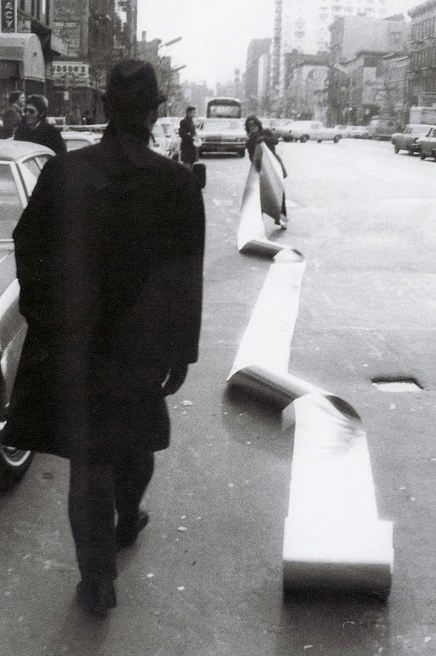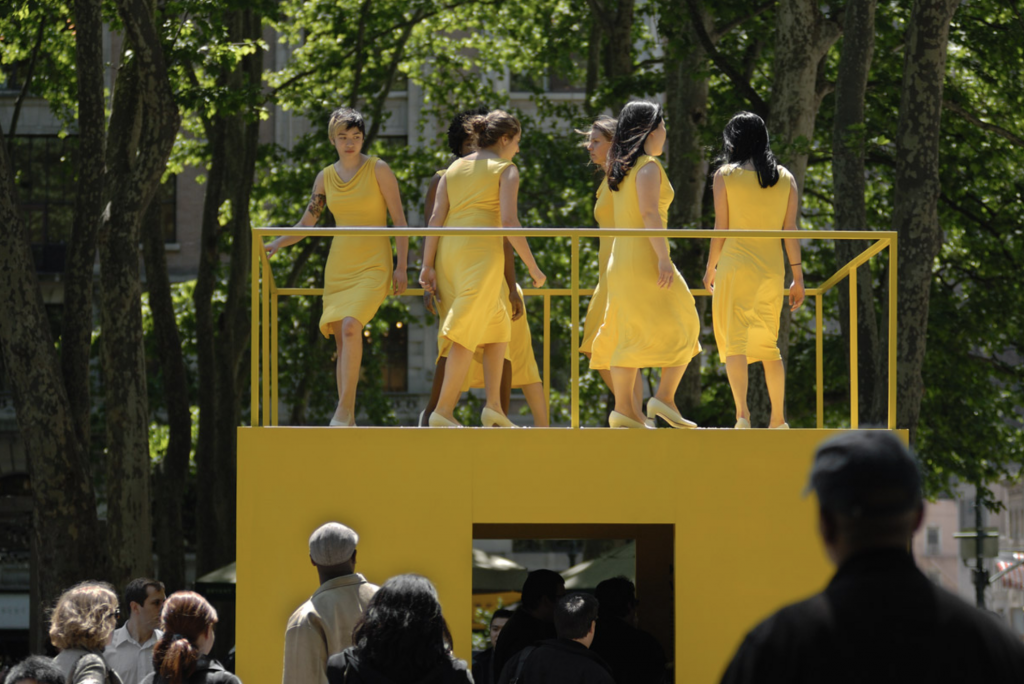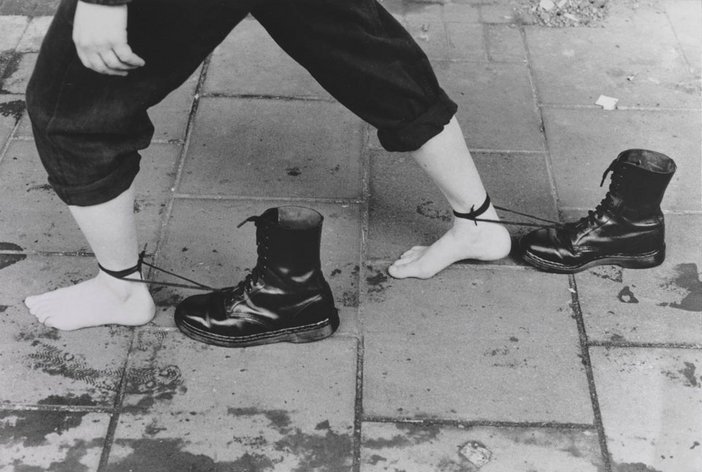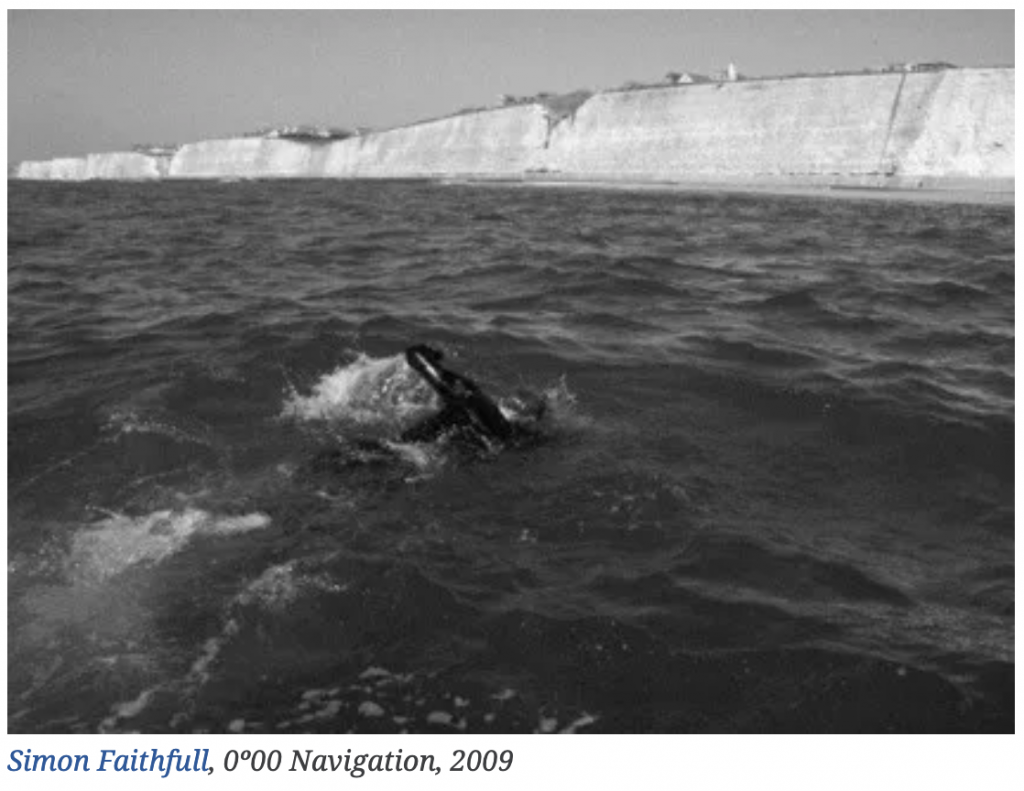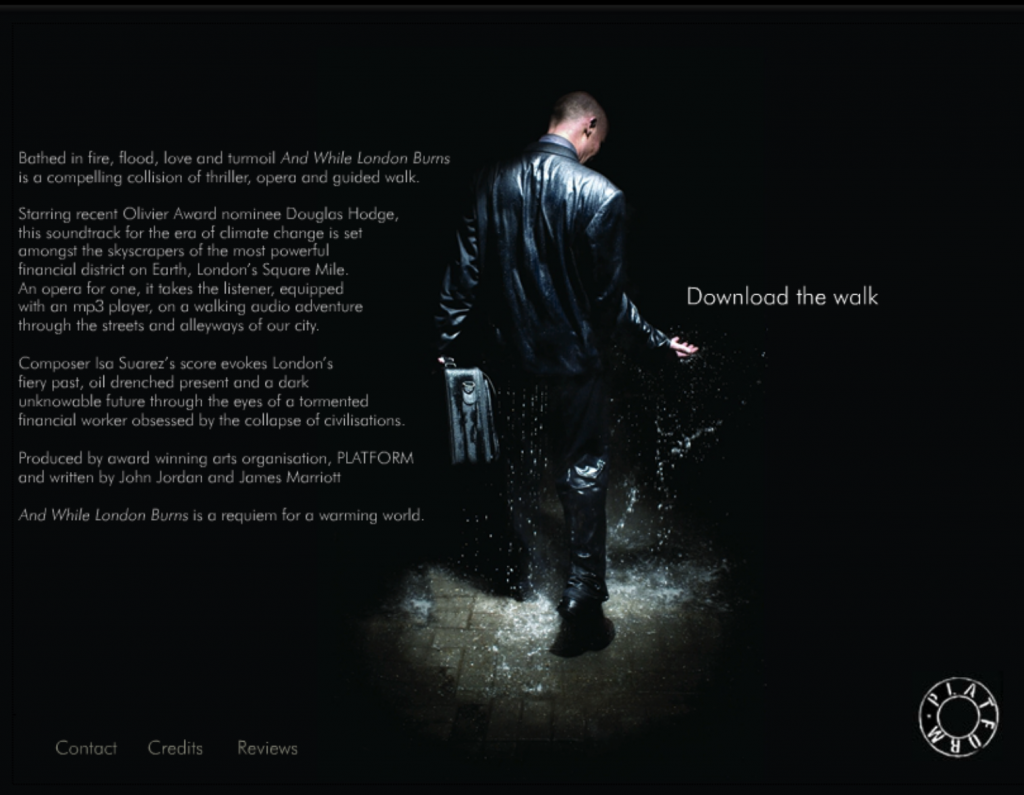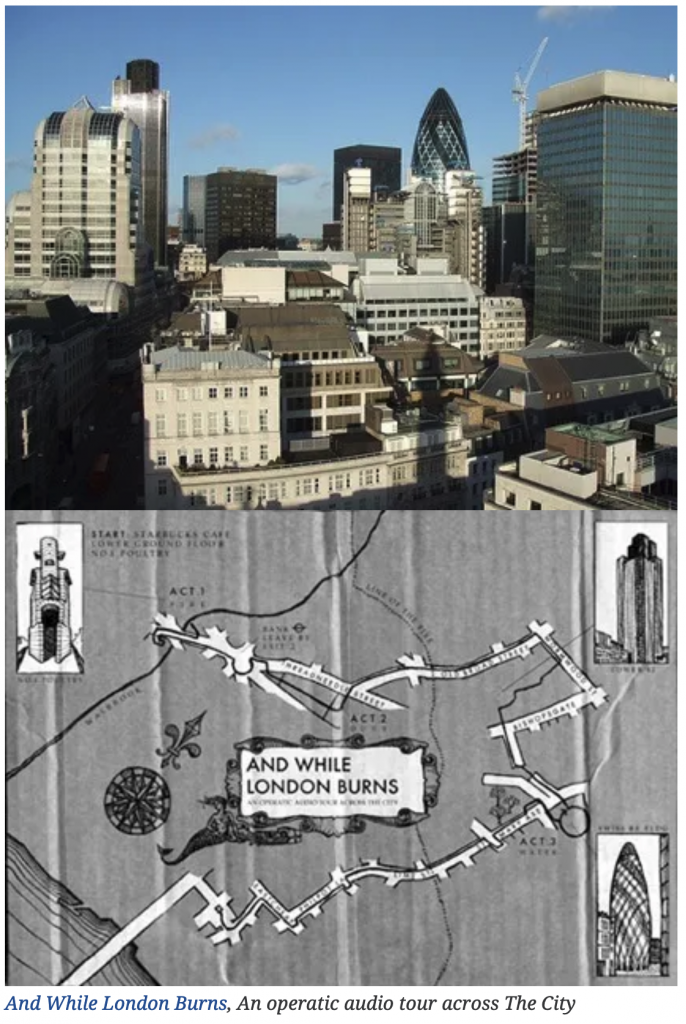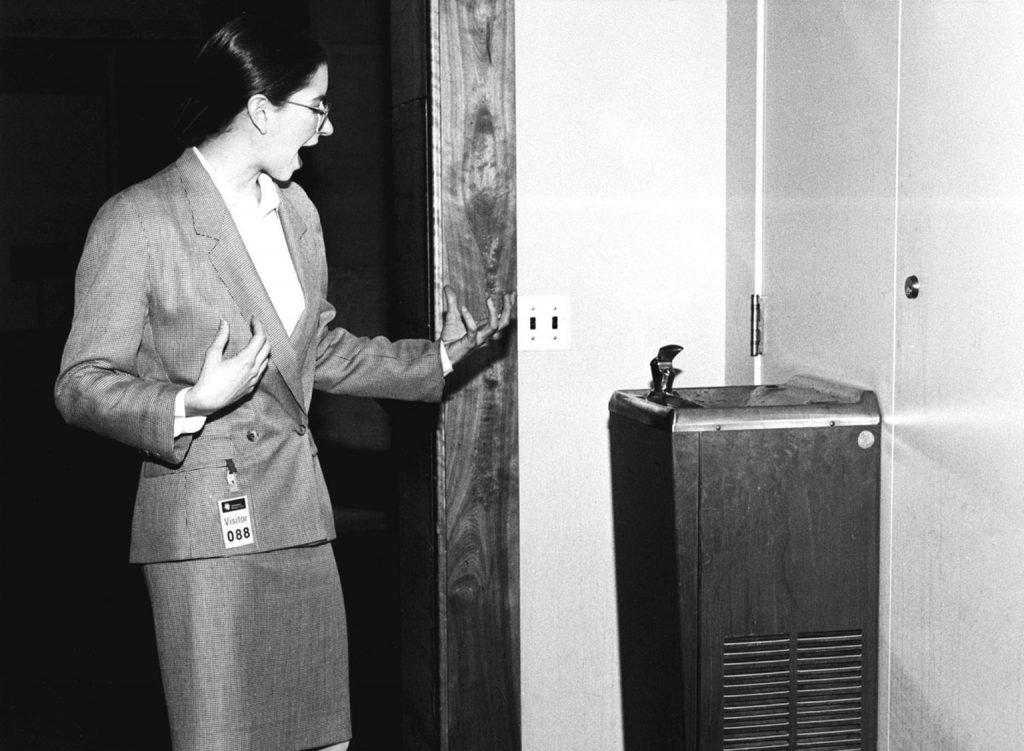
(credit) Andrea Fraser, Museum Highlights: A Gallery Talk, 1989, video still, Philadelphia Museum of Art, Philadelphia, PA, USA.
[credit]
Museum Highlights: A Gallery Talk 1989 is a single channel colour video in which the American artist Andrea Fraser leads a tour of the Philadelphia Museum of Art in the guise of a fictional docent named Jane Castleton. Dressed in a smart grey suit, Castleton, who introduces herself as a ‘guest’, ‘a volunteer’ and ‘an artist’, speaks directly to the camera as she walks around the museum. Alongside conventional elements of a gallery tour – such as the history of the institution and its collection – Castleton offers her thoughts on the building’s toilets, cloakroom and shop. She also pronounces, in strange digressions and with great passion, on broader political and social ideas. The language Fraser employs in her performance appears to be a parody of the descriptions commonly provided by docents, with Castleton applying extensive and exaggerated praise to the items she encounters. There is often an odd disjuncture between the docent’s words and the objects she is describing, such as when she points to an exit sign and claims, ‘this picture is a brilliant example of a brilliant school’. Throughout the tour Castleton repeatedly returns to questions of personal taste, and the notions of grace, dignity and order that she feels artworks, museums and gallery visitors should embody.
Museum Highlights originated as part of a lecture series organised by the Tyler School of Art in Philadelphia, with Fraser delivering five performances as Jane Castleton to visitors of the Philadelphia Museum of Art in February 1989. This filmed version of the tour, which does not feature a live audience, was shot and edited later in 1989. A script of Fraser’s performance was subsequently published with stage directions and footnotes in a German translation in 1990 (in the journal Durch) and in English in 1991 (in the journal October; see Fraser 1991, pp.104–22). The text incorporates multiple sources, listed in the credit sequence at the end of the film although mostly unacknowledged by Castleton during the tour, including historical documents relating to the establishment of the Philadelphia Museum of Art, biographical information about the museum’s donors, and quotations from philosophers, sociologists and political theorists.
Fraser created the persona of Jane Castleton after the American artist Allan McCollum suggested that she explore the role of the museum docent. Her first gallery tour, Damaged Goods Gallery Talk Starts Here 1986, involved a series of performances as Castleton, which were not filmed, at the New Museum of Contemporary Art in New York. For Fraser, ‘Jane Castleton is neither a character nor an individual. She is an object, a site determined by a function. As a docent, she is the museum’s representative, and her function is, quite simply, to tell visitors what the museum wants – that is, to tell them what they can give to satisfy the museum’ (Fraser 2007, p.242).
In satirical fashion Castleton’s speeches in Museum Highlights draw particular attention to the assumptions that have historically been placed on the value of art, especially in relation to notions of class. For example, the docent claims during the tour, ‘The public, who buy clothes and table china and inexpensive jewelry, must be forced to raise their standards of taste by seeing the masterpieces of other civilizations and other centuries’. As art historian Alexander Alberro explains, ‘Fraser does not critique just the institution of the museum; by extension, she also analyzes the type of viewer the museum produces and the process of identification that artists embody’ (Alexander Alberro, ‘Introduction: Mimicry, Excess, Critique’, in Fraser 2007, p.xxvii).
Although Fraser abandoned the persona of Castleton after completing Museum Highlights, she continued her interest in the role of the docent in Welcome to the Wadsworth 1991, a live performance and subsequent video work involving a tour of the exterior of the Wadsworth Atheneum in Connecticut during which the institution’s relationship to the surrounding area is discussed. In her video Little Frank and His Carp 2001 (Tate T12324), Fraser performed as a visitor rather than a docent, walking around the atrium of the Guggenheim Museum Bilbao listening to the institution’s official audio guide and enacting a series of increasingly sexual gestures in response to descriptions of the building’s architecture.
Fraser’s interest in exploring the purpose of art institutions, the official policies and unspoken assumptions that support their work, and the different roles played by individuals within the art world, have seen her work closely associated with the idea of institutional critique. This mode of practice, exemplified by the work of artists such as Hans Haacke and Michael Asher, emerged in the 1960s to examine the structures and ideologies underpinning museums and galleries.
Further reading
Andrea Fraser, ‘Museum Highlights: A Gallery Talk’, October, vol.57, Summer 1991, pp.104–22.
Yilmaz Dziewior (ed.), Andrea Fraser: Works 1984–2003, exhibition catalogue, Kunstverein in Hamburg, Hamburg 2003, pp.114–15, 244–53.
Andrea Fraser, Museum Highlights: The Writings of Andrea Fraser, Cambridge, Massachusetts 2007, pp.95–114.
Richard Martin
July 2014
